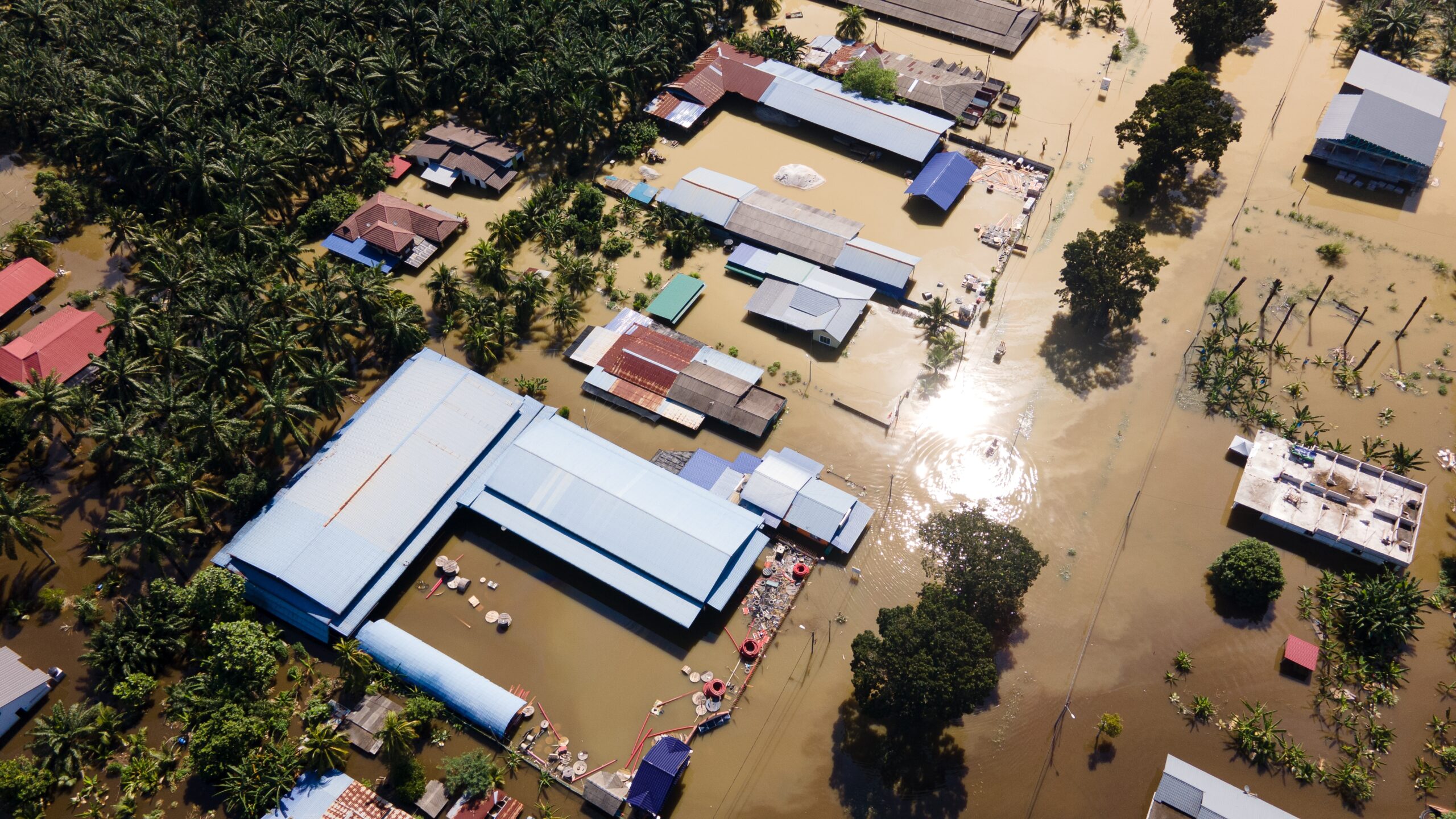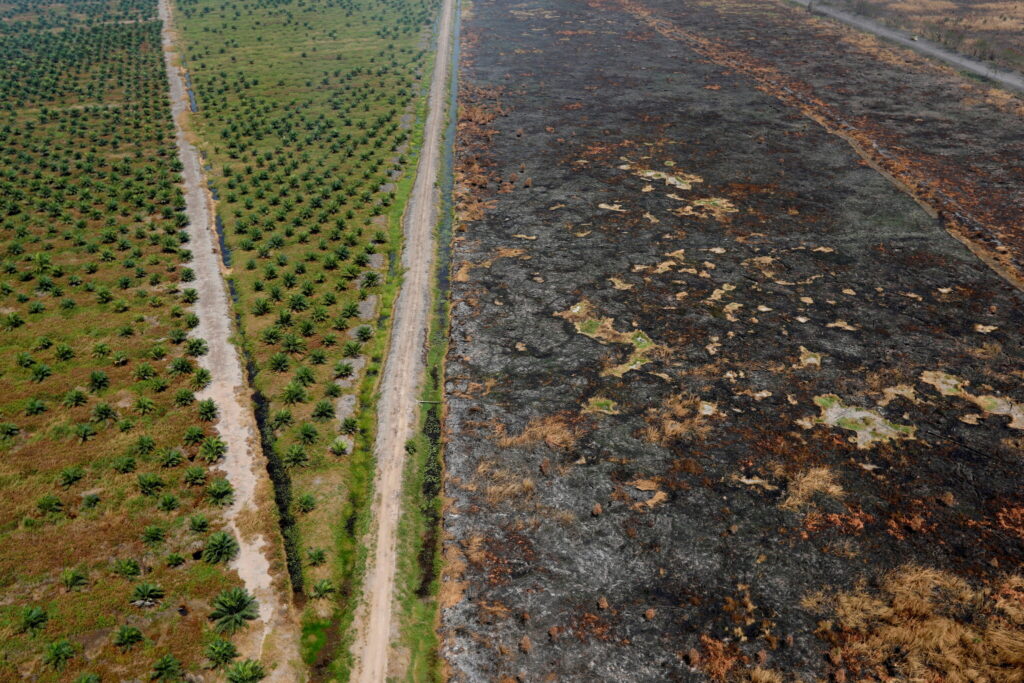Typhoons are one of the world’s costliest and deadliest weather events, accounting for one-third of global deaths and economic losses from natural disasters over the past 50 years. The continent of Asia is already one of the world’s most at-risk regions for climate-induced extreme weather events, and scientists warn that the risks of severe typhoons in Asia will increase as the planet heats.
Additionally, Asia’s densely populated coastal areas, its high proportion of agricultural and nature-based livelihoods and the prevalence of poverty add to its vulnerability to climate impacts such as typhoons. Therefore, adaptation measures are essential to enhance resilience and reduce the social and economic damage from these destructive disasters.
Climate Change Is Influencing Tropical Cyclone Inland Impacts
Climate change has already increased the intensity of typhoons – also known as cyclones or hurricanes – according to IPCC scientists. Indeed, a 2016 study focused on East and Southeast Asian countries found that landfalling typhoons intensified by up to 15% over the past 37 years. They have also doubled their destructive power. Meanwhile, the proportion of Category 4 and 5 storms doubled or tripled over this time due to warming seas.
“It is a very, very substantial increase,” said lead researcher Professor Wei Mei. “We believe the results are very important for east Asian countries because of the huge populations in these areas.”
Professor Mei added: “We want to give the message that typhoon intensity has increased and will increase in the future because of the warming climate.” Action is needed to prepare for future typhoons and reduce planet-heating greenhouse gases to curb warming, he said.
Ultimately, the impacts of these increasingly intense tropical cyclones will include stronger winds, heavier rainfall, higher waves, storm surges and coastal flooding, said World Meteorological Organisation (WMO) Assistant Secretary-General Dr. Wenjian Zhang.
Moreover, the poorest and most underserved communities are most affected by these increasingly severe events, highlighted the International Federation of Red Cross and Red Crescent Societies (IFRC). As a result, climate-induced typhoons and floods are exacerbating underlying vulnerabilities and degrading livelihoods and resilience, said the organisation.
Recent Typhoons in the Eastern and Southeastern Regions of Asia
Here are some recent typhoons that affected Eastern and Southeastern Asian inland regions.
Super Cyclone Amphan
Super cyclone Amphan struck India and Bangladesh in May 2020, impacting lives and infrastructure and driving the biggest surge of human displacement that year.
One study noted that Ampham forced 2.4 million people from their homes in India alone. It stated that this was also the costliest cyclone ever to make landfall in South Asia, adding: “Hundreds of thousands of cattle were lost, tens of thousands of buildings completely destroyed and ~USD 20 million (in) damage done to fisheries alone, primarily from the storm surge.” Furthermore, cases of COVID-19 rose in the weeks following the disaster as people crowded into shelters – an example of “compounding crises”, explained the researchers.
Meanwhile, in Bangladesh, 26 people died due to Cyclone Ampham. The cyclone also damaged more than 200,000 houses along with water points, crops and fishing facilities. Overall, the cyclone impacted approximately 2.6 million people across the nation.
Typhoon Hagibis
Typhoon Hagibis struck Japan in October 2019 with strong winds and violent floods, causing widespread destruction. The typhoon killed at least 98 people, injured hundreds more and caused about 270,000 homes to lose power. The damage cost the country USD 15 billion – the highest amount in recent times.
According to a study by World Weather Attribution (WWA), human-caused climate change made the extreme rainfall from Cyclone Hagibis 67% more likely. Climate change was also responsible for approximately USD 4 billion of the cyclone’s damage, WWA researchers said.
Super Typhoon Haiyan
Super Typhoon Haiyan was a massive, highly destructive storm that hit the North Pacific Ocean in November 2013. The typhoon impacted many countries, including Palau, Vietnam and China, causing high winds, coastal storm surges, heavy rains and flooding.
But, by far, the worst-hit region was the central Philippines, where maximum sustained winds measured 314 km/h – the highest windspeed ever recorded at landfall. Here, the typhoon resulted in more than 6,201 deaths and severely damaged or destroyed the homes of 4 million people. Overall, the typhoons impacted 14 million people across 46 provinces and resulted in 1.1 million tonnes of crops lost. The total cost of damage was around USD 12 billion, with many considering Super Typhoon Haiyan to be the country’s worst-ever natural disaster.
Adapting to the Intensifying Typhoons of the Future
In addition to an increase in the intensity and duration of typhoons, a 2021 study projected that typhoons would also penetrate 50% further inland in East and Southeast Asia by the end of the century. This will expose more regions to these severe and destructive events, and enhancements to disaster preparedness and resilience are, therefore, needed, said the researchers.
To adapt to this more dangerous future, the WMO’s Dr. Zhan highlights that there is a “pressing need” to strengthen typhoon monitoring, forecasting and early warning systems. This is alongside preparedness and mitigation measures for extreme typhoon disasters.
Concurrently, Under-Secretary-General of the United Nations Armida Salsiah Alisjahbana noted that prioritising adaptation investment for typhoons and flooding is vital, given the vast economic losses caused by these destructive events.
“New infrastructure needs to be made more resilient, alongside improvements in water resources management and dryland agriculture crop production, while nature-based solutions bring durable and wide-ranging benefits,” highlighted Ms Salsiah Alisjahbana. She added that not only would these limit the destructive impacts of typhoons, but they would help to enhance progress towards the UN’s Sustainable Development Goals in impacted regions.
Evelyn Smail
Writer, United Kingdom
Evelyn is a freelance writer and journalist specialising in climate science and policy, the just energy transition and the human impacts of climate change. She writes for independent publications, NGOs and environmental organisations. Evelyn has a background in sustainable development, climate justice and human rights.
Evelyn is a freelance writer and journalist specialising in climate science and policy, the just energy transition and the human impacts of climate change. She writes for independent publications, NGOs and environmental organisations. Evelyn has a background in sustainable development, climate justice and human rights.















